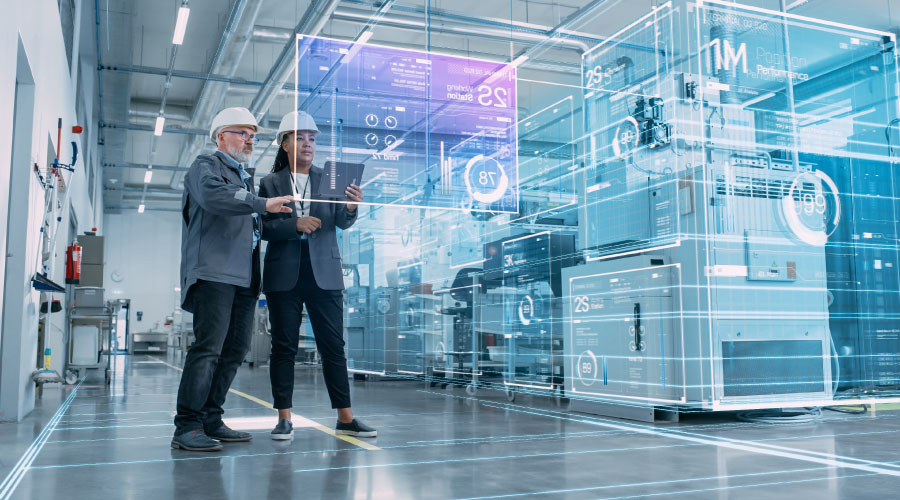Secret Fads Shaping the Future of Facility Administration in 2024
As we look ahead to 2024, the landscape of center monitoring is positioned for significant change, driven by several key fads. The combination of smart structure innovations and a shift in the direction of data-driven decision-making pledge to enhance functional effectiveness while prioritizing sustainability in technique.
Smart Building Technologies

Smart structure modern technologies encompass a wide range of systems, including intelligent illumination, cooling and heating controls, and protection systems. By incorporating these systems, facility managers can keep track of and change specifications in real-time, resulting in considerable reductions in energy waste and operational costs. For example, smart sensing units can detect tenancy degrees and readjust illumination and temperature level appropriately, guaranteeing that energy is only used when necessary.
In addition, these modern technologies facilitate improved data collection, allowing organizations to track use patterns and determine opportunities for more enhancements. The execution of clever building innovations not only adds to sustainability objectives however likewise produces healthier workplace that can boost worker efficiency and complete satisfaction.
As we relocate right into 2024, the adoption of wise building modern technologies will likely speed up, mirroring a wider shift in the direction of more intelligent, receptive, and sustainable center administration practices.
Data-Driven Choice Making
Increasingly, companies are leveraging data-driven decision making to improve center administration techniques. By utilizing information analytics, facility supervisors can derive actionable understandings that substantially enhance functional efficiency and resource appropriation. The combination of innovative technologies, such as IoT sensing units and real-time monitoring systems, allows the collection of substantial amounts of data on structure efficiency, occupancy rates, and power consumption.
This riches of details allows facility managers to recognize fads, predict upkeep demands, and proactively address issues before they intensify. For circumstances, anticipating analytics can forecast devices failings, lowering downtime and repair costs. Furthermore, information visualization devices facilitate better communication among stakeholders, making sure that educated choices are made collaboratively.
Moreover, data-driven approaches enhance tactical planning by allowing facility managers to evaluate the efficiency of present methods and make notified options relating to financial investments in modern technology or framework. As companies significantly focus on functional quality, data-driven choice production is positioned to come to be a keystone of effective center administration methods in 2024 and beyond. Eventually, the ability to leverage data effectively will empower organizations to develop extra reliable, efficient, and resilient facilities.
Sustainability and Environment-friendly Practices
The focus on data-driven decision making naturally straightens with the growing concentrate on sustainability and green techniques within facility management. As companies progressively prioritize ecological duty, facility supervisors are leveraging analytics to maximize resource use, minimize waste, and reduce carbon impacts. This calculated method enables the assimilation of energy-efficient systems, such as LED illumination, smart cooling and heating controls, and renewable resource resources into center operations.
In addition, the application of sustainable methods extends past energy usage. Facility managers are advertising and adopting green materials reusing efforts to develop a circular economic situation within their facilities. This not just enhances the environmental account of the organization however also promotes a society of sustainability among workers.
Conformity with environmental guidelines is another important aspect driving the adoption of environment-friendly practices. By using information analytics, center managers can keep an eye on conformity metrics and identify areas for renovation, ensuring adherence to international and local sustainability requirements.
Crossbreed Job Models
A considerable change in the direction of hybrid work versions is improving the landscape of facility administration in 2024. This standard incorporates remote and in-office work, requiring a reevaluation of room use, resource allowance, and staff member involvement strategies. click for more info Organizations are increasingly acknowledging the value of adaptable work spaces that satisfy varied demands and preferences.
Facility supervisors should adjust by executing functional office styles that sustain collective initiatives while providing locations for concentrated work. This consists of the integration of innovation to promote seamless communication and cooperation among remote and in-office staff members. Smart building options, equipped with analytics and sensors, permit real-time surveillance of area use, enabling companies to maximize their environments effectively.
In addition, crossbreed job versions highlight try this out the requirement for efficient facility management that prioritizes worker experience. In significance, the crossbreed job design is transforming facility management, urging an aggressive strategy to fulfill the progressing demands of the workforce.
Boosted Owner Health
As organizations embrace hybrid job versions, an increased concentrate on occupant health is ending up being essential to facility monitoring methods. Facility Management. This shift identifies that a satisfied and healthy and balanced workforce directly influences efficiency and retention prices. Center managers are currently focusing on environments that advertise psychological and physical well-being, integrating elements such as all-natural lighting, biophilic design, and easily accessible wellness resources

Modern technology plays an important role in this advancement. Smart building systems can keep track of environmental factors and change setups in real-time, making sure optimal convenience degrees - Facility Management. Additionally, responses devices, such as tenancy sensors and worker surveys, enable center supervisors to consistently fine-tune wellness efforts based on owner needs.

Conclusion
In 2024, the important site future of facility management will be considerably influenced by the integration of smart building technologies and data-driven decision-making, fostering improved functional performance. These fads jointly highlight the developing landscape of facility management in response to modern challenges and chances.
Facility managers are adopting green materials and advertising reusing efforts to produce a circular economic situation within their centers.A considerable shift in the direction of hybrid work versions is reshaping the landscape of facility monitoring in 2024.Additionally, hybrid work designs emphasize the need for reliable facility administration that prioritizes staff member experience.As organizations embrace hybrid job designs, an enhanced emphasis on occupant health is ending up being integral to center management approaches.In 2024, the future of facility monitoring will be significantly affected by the integration of wise building innovations and data-driven decision-making, fostering enhanced functional effectiveness.
Comments on “Exactly How Facility Management Improves Office Performance”